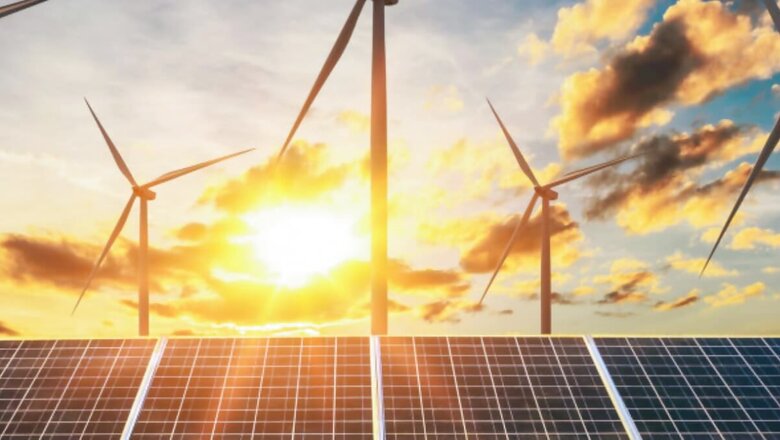Cheaper Solar Power to Boost India’s Climate Action, But Energy Storage Key: ISA Chief Ahead of Meet

views
The technologies, which favour climate, will be preferred the most for investment in near future said Director-General of the International Solar Alliance (ISA) Ajay Mathur, stressing the surging funding in clean energy globally. The solar power spending is expected to touch $380 billion this year — the highest that it has ever been for electricity production business.
“The proof of the pudding has been discovered. The price of solar, wind and hybrid for the 24-hour supply is now far less than the price of new coal power. This shows that we have turned the corner. This will greatly influence the dynamics of change in India,” said Mathur during a discussion on the ‘Road to COP28’ organised by ‘Climate Trends’, a research-based consulting initiative.
India has committed to achieving a total of 500 GW of renewable energy capacity by 2030, with at least 280 GW of it coming from solar. Prime Minister Narendra Modi announced that the country has set its target of producing 50% of its energy needs through non-fossil fuels by the end of this decade.
As of June 2023, India has increased its installed renewable energy capacity to 176.49 GW compared to 115.94 GW in March, 2018.
TRIPLING RENEWABLE ENERGY CAPACITY BY 2030
According to Mathur, the G20 Leaders’ recent support to achieving the goal of tripling of renewable energy capacity by 2030 is recognition of the fact that the prices of renewable energy have fallen, and countries are ready to see how it is integrated in the overall power mix. The challenge now is to make storage also cost-effective.
“Solar is becoming the cheapest form of electricity almost everywhere in the world but only when the Sun is shining. What do you do at night? We need to move towards a future in which storage becomes more cost-effective. This is the main technological challenge that the world has. India may find ‘solar plus wind plus batteries’ more cost effective. But we need to build large-scale solar capacity or wind capacity in any case and use it to bring down the costs as well,” he remarked.
Talking about the road to the upcoming UN Climate Conference (COP28) in Dubai, he said he is looking forward to countries’ support to pushing technologies that are climate-friendly including solar energy, as well as Green hydrogen, and flow of finance in the form of guarantees.
Even though the Carbon Capture Usage and Storage (CCUS) technologies have garnered renewed global interest, the ISA chief said their role will be marginal. “The prices of solar energy have changed dramatically over the years. Now, we are at the cusp of technologies, which will use green hydrogen in making steel. So, CCUS will be priced out by a variety of interventions. But it is not an option that will disappear. There will still be some emissions that will have to be captured and stored,” he stated.
COAL CRITICAL PART OF ENERGY MIX TILL 2060
Even though India continues to face global scrutiny over fossil fuel burning, especially its long-reliance on coal, which is the source of 70% of the electricity, Mathur said India has come this far by pushing renewables, and not by saying it will not use coal.
Underlining the vast differences in energy demand and access that still exist between developed and developing countries, Mathur said the demand for energy is still growing in the developing countries for both daylight and nondaylight hours.
Mathur, who has also been a member of the PM’s Council on Climate Change, unequivocally said coal will continue to be the large part of India’s energy mix at least till 2060.
“But, by that time, we will have enough retirements of coal power plants happening such that we can go in for a pure, renewable energy-based system. Therefore, it is important to note that economics matters, and second, that if adequate time is given, the technologies which favour climate become the preferred technologies,” he asserted.
“We must see how the economics plays out in every society when the rubber hits the road. We have come to a point in India where the economics has shown that the cost of grid electricity is less than that of coal-based power plants. All the additional growth — what the Central Electricity Authority (CEA) expects to be around 818 Terawatt hours (TWh) between now and 2030 — would be met by this. I cannot see the financial sector providing loans for anything else”.
A joint global climate initiative launched by India and France to promote solar energy, the International Solar Alliance (ISA) is set to hold its Sixth Annual Assembly in New Delhi from 31 October. As many as 116 countries are signatories to the ISA Framework Agreement, and expected to attend the meeting of the apex-decision making body.


















Comments
0 comment